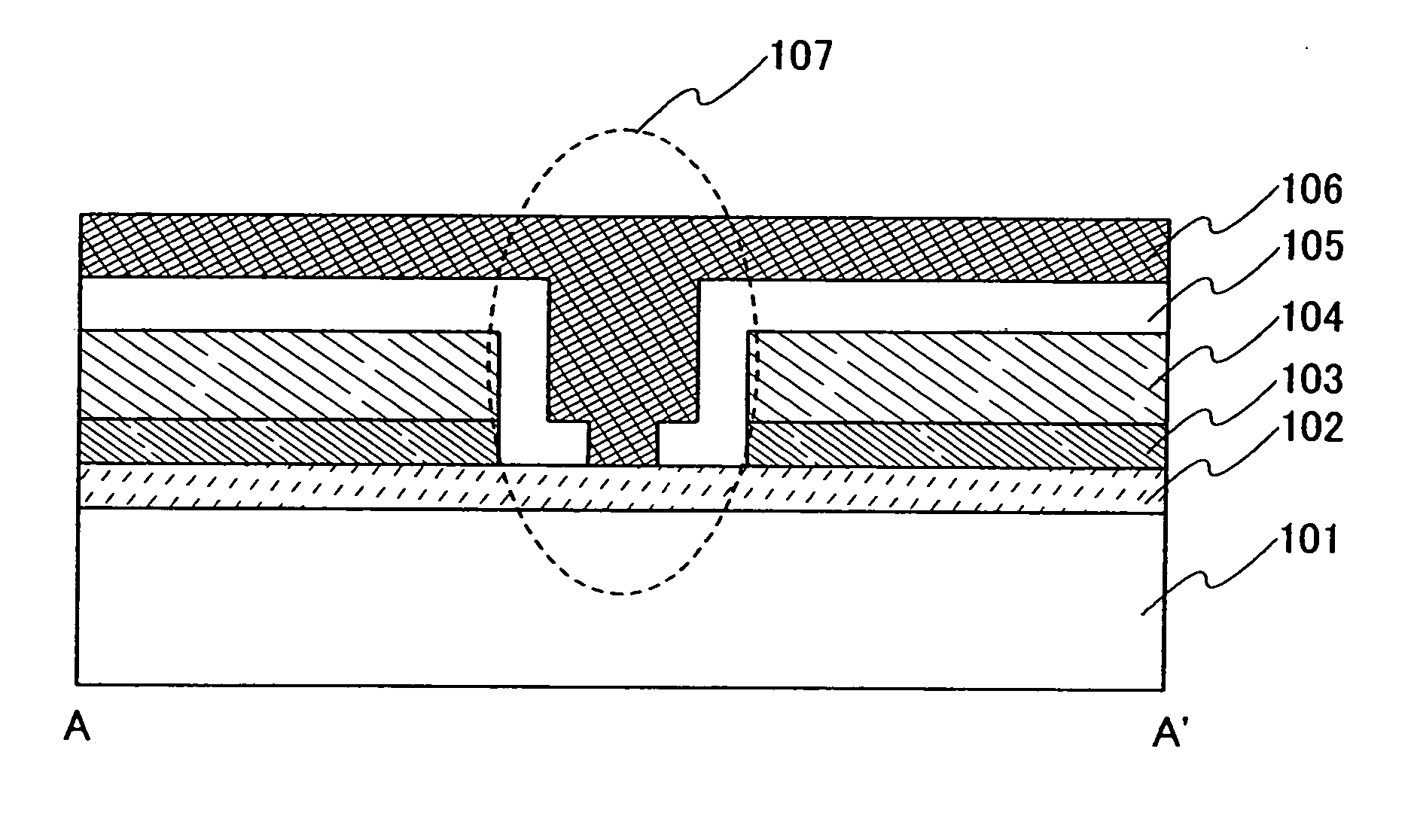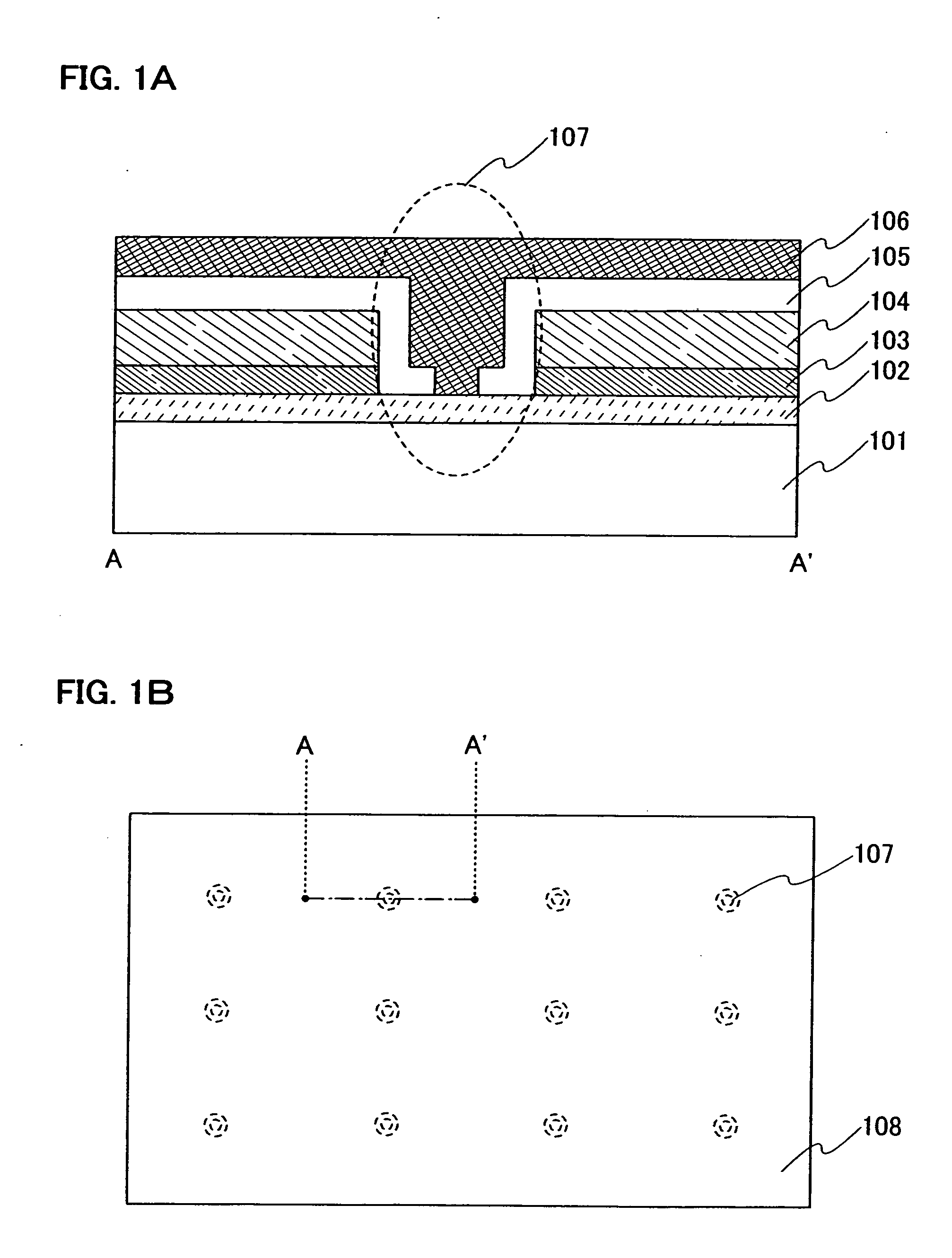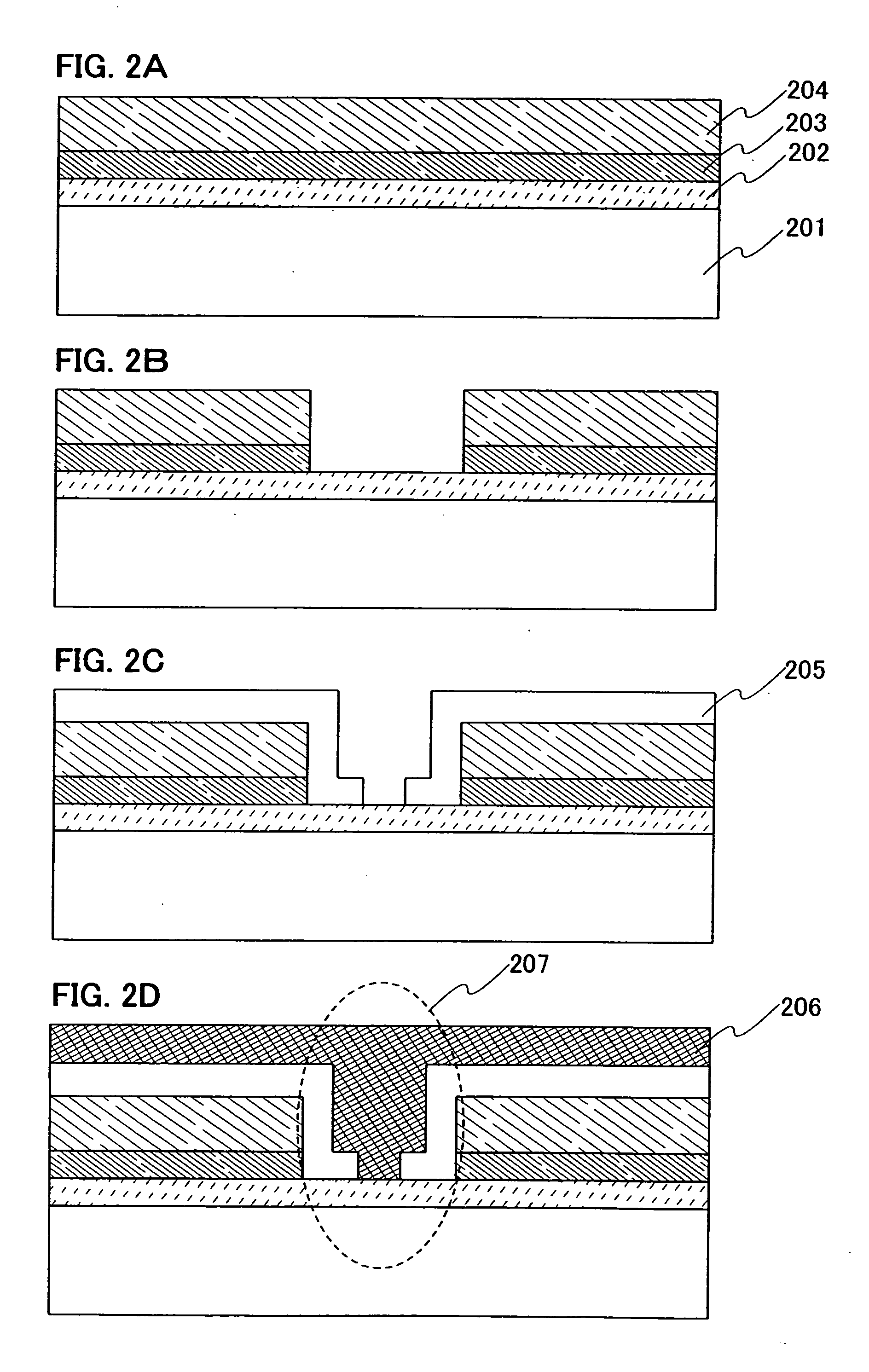Lighting device
a technology of light source and transparent electrode, which is applied in outdoor lighting, planar light sources, lighting and heating apparatus, etc., can solve the problems of low luminance, voltage drop, and high resistivity of transparent conductive film, and achieve favorable in-plane luminance uniformity
- Summary
- Abstract
- Description
- Claims
- Application Information
AI Technical Summary
Benefits of technology
Problems solved by technology
Method used
Image
Examples
embodiment mode 1
[0034] A structure of a lighting device of the invention is described with reference to FIGS. 1A and 1B. A lighting device shown in FIGS. 1A and 1B is a bottom emission lighting device which emits light from a substrate side. Note that FIG. 1B is a top view of a light emitting region in a lighting device of the invention and FIG. 1A is a cross-sectional view (taken along line A-A′ in FIG. 1B) of the vicinity of an opening in the light emitting region.
[0035] In FIGS. 1A and 1B, a light transmitting substrate is used as a substrate 101. Specifically, a light transmitting material such as glass, plastic, polyester resin, or acrylic resin can be used. The substrate 101 may be flexible.
[0036] A transparent conductive film is formed over the substrate 101 as a first electrode 102. For example, indium tin oxide (hereinafter referred to as ITO), indium tin oxide containing silicon, indium oxide containing zinc oxide (ZnO) of 2% to 20%, or the like can be used for the transparent conductiv...
embodiment mode 2
[0054] A structure of a lighting device of the invention is described with reference to FIGS. 5A and 5B. A lighting device shown in FIGS. 5A and 5B is a top emission lighting device which emits light from the opposite side of a substrate side. Note that FIG. 5B is a top view of a light emitting region of a lighting device and FIG. 5A is a cross-sectional view (taken along line A-A′ in FIG. 5B) of the vicinity of an opening in the light emitting region.
[0055] In FIGS. 5A and 5B, a thin substrate formed of a flexible material is used as a substrate 501. Specifically, a flexible substrate such as a plastic substrate, more specifically a polyester film or an acrylic resin film, can be used.
[0056] A second electrode 502 is formed over the substrate 501. A known material can be used for the second electrode 502. In the case of using the second electrode 502 as a cathode, a conductive material having a low work function is preferably used. Rare earth metal such as Yb or Er can be used to...
embodiment 1
[0064] A method for manufacturing the lighting device of the invention shown in FIGS. 1A and 1B is described in this embodiment with reference to FIGS. 2A to 2D.
[0065] A transparent conductive film serving as a first electrode 202 is formed over a light transmitting substrate 201. In this embodiment, a glass substrate is used as the light transmitting substrate 201 and an ITO film is formed for forming the first electrode 202.
[0066] A layer including a light emitting material 203 is formed over the first electrode 202. A known material can be used for the layer including a light emitting material 203. The layer including a light emitting material may have a laminated structure of a plurality of layers each including a light emitting material.
[0067] A second electrode 204 is formed over the layer including a light emitting material 203 (FIG. 2A). The second electrode 204 has an opening. After the second electrode is entirely formed over the layer including a light emitting materia...
PUM
 Login to View More
Login to View More Abstract
Description
Claims
Application Information
 Login to View More
Login to View More - R&D
- Intellectual Property
- Life Sciences
- Materials
- Tech Scout
- Unparalleled Data Quality
- Higher Quality Content
- 60% Fewer Hallucinations
Browse by: Latest US Patents, China's latest patents, Technical Efficacy Thesaurus, Application Domain, Technology Topic, Popular Technical Reports.
© 2025 PatSnap. All rights reserved.Legal|Privacy policy|Modern Slavery Act Transparency Statement|Sitemap|About US| Contact US: help@patsnap.com



